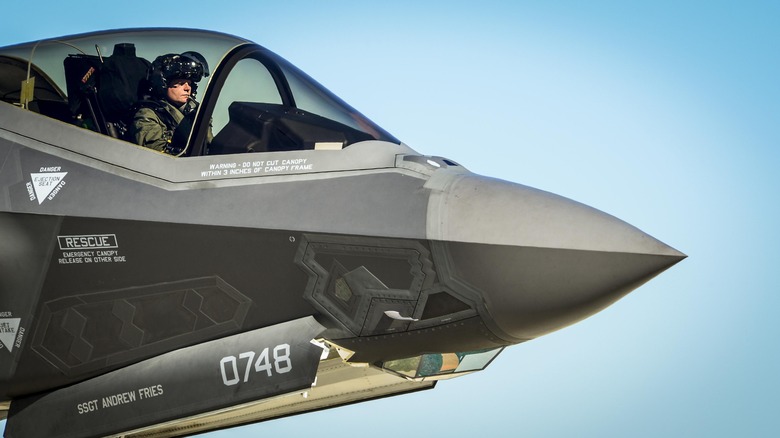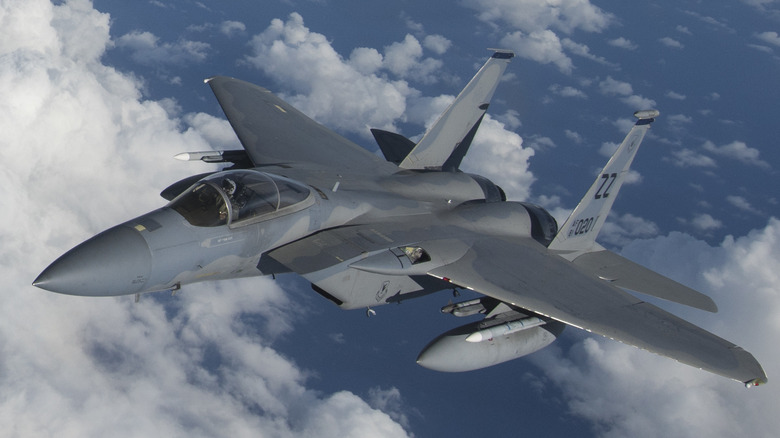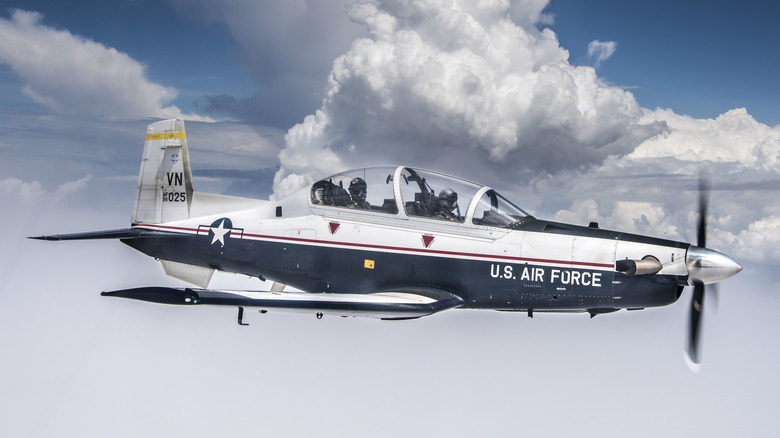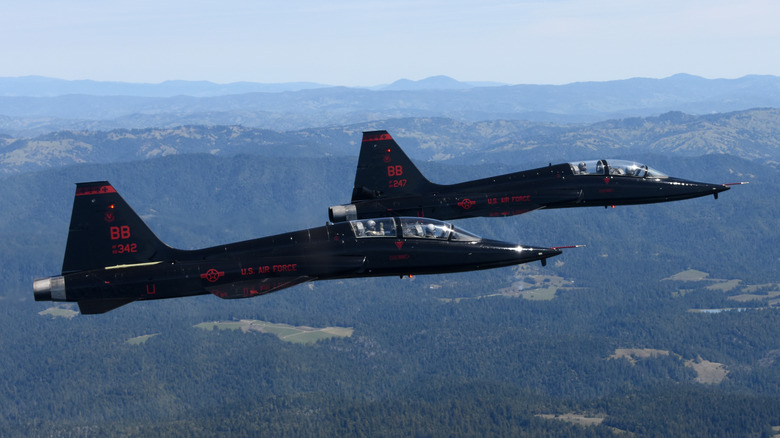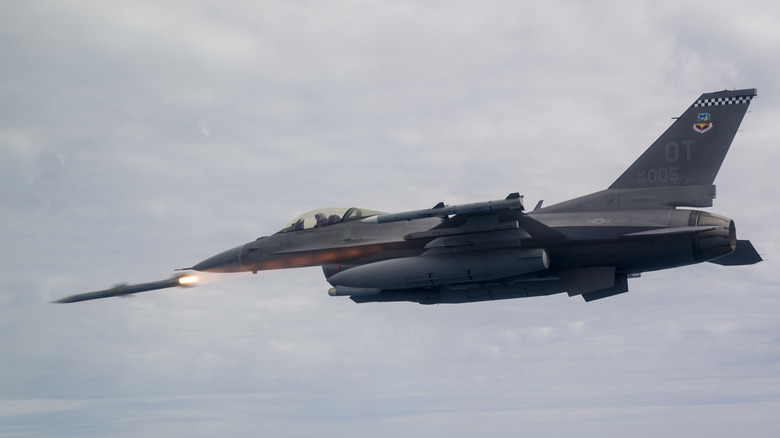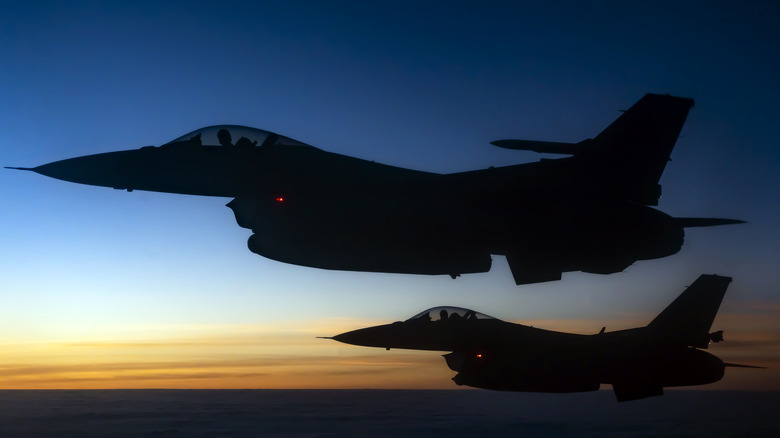Dogfight In The Digital Age: How Fighter Jet Pilots Train For Modern Warfare
Ever since aviators first used planes for combat at the turn of the 20th century, air combat has been in a constant state of evolution. In World War I, fighter planes like the Sopwith Camel or Fokker DR.1 started to see heavy use. It wasn't until World War II that aircraft became instrumental in turning the tide of the battle in both the European and Pacific Theaters. Allied fighter planes like the North American P-51D Mustang overpowered German planes and ensured victory in the sky, while aircraft carrier-based dive bombers crippled the Imperial Japanese Navy.
Conventional machine guns and bombs were the primary armament of choice for both World Wars. To shoot down an enemy aircraft, the pilot had to close into relatively short range and pepper the enemy with machine gun fire until the threat was neutralized. Such engagements are colloquially known as "dogfights."
Fast forward a number of decades, and while modern fighter jets still have machine guns and cannons, guided air-to-air missiles are now the de facto default way of downing airborne threats.
Air-to-air armaments
Modern stealth fighters like the F-22 Raptor are able to detect and neutralize a threat before the enemy even knows what's happening, essentially eliminating the need to close in for a dogfight. Even non-stealth fighters like the F-16 Fighting Falcon or F-15 Eagle have evolved past the need for close-quarters fighting. Missiles like the AIM-9 "Sidewinder" or AIM-120 AMRAAM (advanced medium-range air-to-air missile) have ranges well exceeding what the pilot is even capable of seeing with their own eyes.
So it's worth asking, with the advancements in air combat over the past several decades all but negating the need for dogfights, how do modern pilots train? It's, after all, a lot more complicated than waiting for radar to detect an enemy plane and just pushing the "fire" button. There's a lot involved behind a modern fighter jet and its pilot's ability to keep the sky clear of potential threats. Most of the training, in fact, takes place before the pilot even gets behind the flight stick of a multi-million dollar fighting machine.
Getting their wings
Perspective pilots who want to take to the sky are put under the training and care of the United States Air Force's Air Education and Training Command in San Antonio-Randolph, Texas. The start of any pilot's career, learning how to fly a plane, is decidedly low-tech. The first plane Air Force students will fly is the T-6 Texan II. Introduced in 2000, the T-6 Texan II is a 1,100 horsepower propellor-driven two-seat trainer plane designed for the sole purpose of giving pilots their first hours behind the flight stick. The T-6 Texan II has a top speed of 320 mph and can climb to upwards of 31,000 feet. It is unarmed.
Despite its antiquated appearance, the T-6 Texan II is outfitted with state-of-the-art avionics systems, and the cabin is fully pressurized. This gives new pilots the ability to learn how to perform basic combat maneuvers and get a lay of the land in the cockpit before ever reaching the insanely high speeds of modern fighter jets.
Supersonic training
Before pilots can hop into the cockpit of the latest variation of the F-35 Lightning II or F/A -18 Super Hornet, they need to get more flight time in an actual jet. That's accomplished through the Northrup T-38 Talon. According to the United States Air Force, the T-38 is used to train not only fighter jet pilots but also perspective pilots for the Rockwell B-1 Lancer strategic bomber and the Fairchild Republic A-10 Thunderbolt II ground-attack jet (also called the "Warthog."
The Talon is quite the leap from the Texan. It carries all of the latest and greatest avionics and targeting systems with the added benefit of a top speed of 812 mph. In the cockpit of the Talon, pilots can learn how to fly in formation and at night. In addition to aerobatics, the T-38 is equipped with practice weapons that allow trainees to learn how to use guns or bombs without expending any munitions.
While the actual jet a pilot will be serving with is the best way to get acclimated to whatever mission a pilot is going on, the T-38 accomplishes the majority of the high-speed training. It's where the "training wheels" are kicked off.
The real deal
After pilots complete training in the T-38 and its variations, then the fighter jets come out. Training for the ubiquitous F-16 takes place, according to the United States Air Force Air Education and Training Command, occurs at Air Force bases in either Arizona or Texas. New pilot training for the F-15, one of the most successful fighter aircraft in history, takes place in Oregon, and for the newest addition to the skies, the F-35 Lightning II, training is in Florida.
If pilots did not opt for the fighter jet route and went for a more support-oriented, training takes place behind the flight stick of a C-17 Globemaster III, variations of the C-130 Hercules, or KC-135 Stratotanker. Training to operate unmanned drones uses aircraft like the MQ-9 Reaper.
Whatever prospective pilots want to fly or are chosen to fly, the Air Force has it covered and does its best to keep pilots ready for combat or just day-to-day operations.
Practice, practice, practice
For pilots in the U.S.A.F. or other branches of the United States military, air-to-air combat doesn't happen all that often since the Vietnam War ended, with the most recent engagement happening in 2017. Gun-to-gun dogfights are also exceedingly rare, with pilots instead opting for air-to-air guided missiles. However, even as combat engagements are rare and infrequent, that doesn't mean that training needs to reflect that. Pilots should be ready for whatever threats arise, and a dogfight might be the best way to deal with said threat.
Hopping in a plane and jetting off to the skies may seem like a low-tech way to train, especially in the world of simulators, but it's by far the best way to get pilots ready for the fight. Simulators can only take you so far. You need to get pilots acquainted with actual metal to ensure they can serve and, if the need arises, fight effectively.
